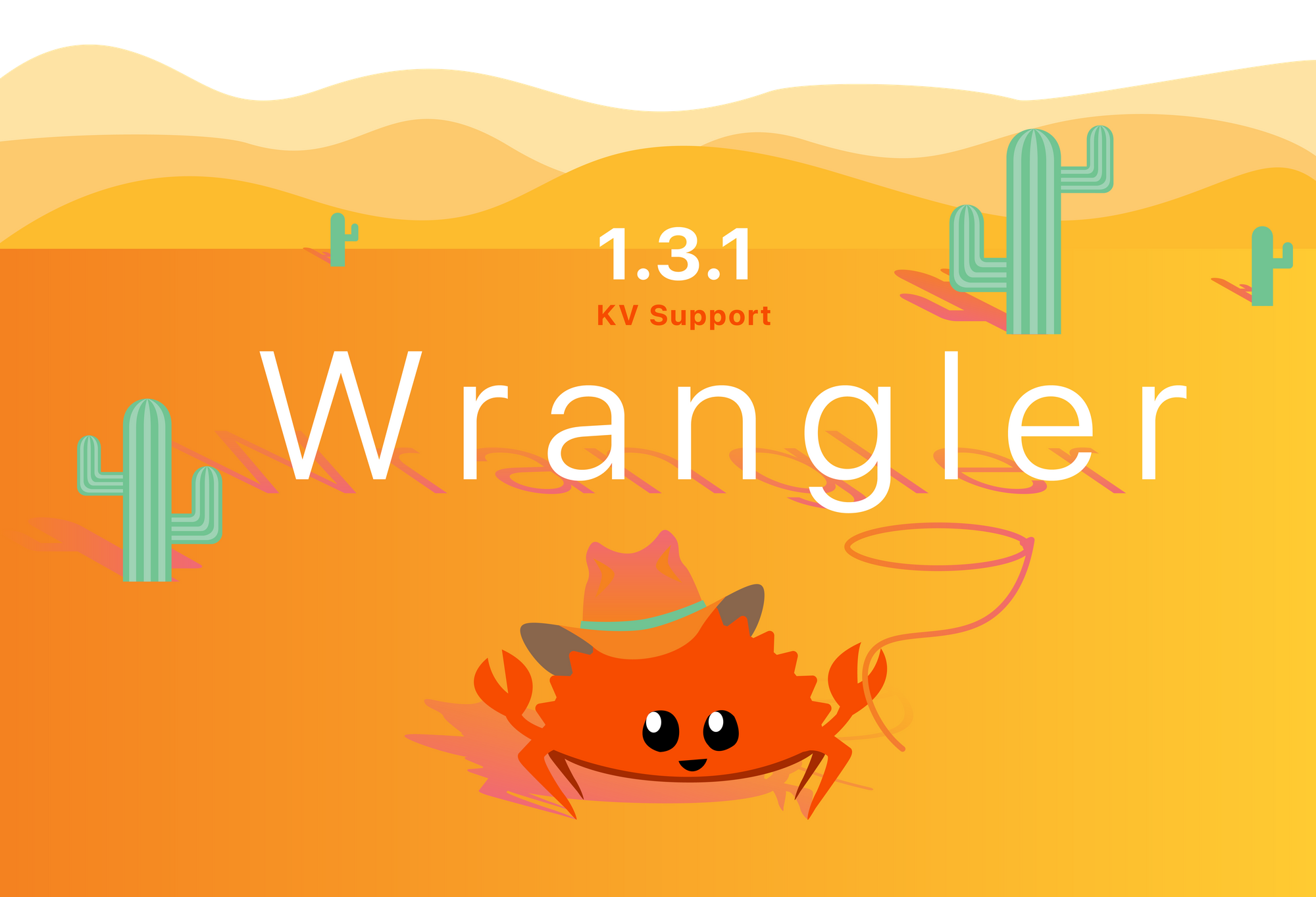How We Design Features for Wrangler, the Cloudflare Workers CLI


The most recent update to Wrangler, version 1.3.1, introduces important new features for developers building Cloudflare Workers — from built-in deployment environments to first class support for Workers KV. Wrangler is Cloudflare’s first officially supported CLI. Branching into this field of software has been a novel experience for us engineers and product folks on the Cloudflare Workers team.
As part of the 1.3.1 release, the folks on the Workers Developer Experience team dove into the thought process that goes into building out features for a CLI and thinking like users. Because while we wish building a CLI were as easy as our teammate Avery tweeted...
If I were programming a CLI, I would simply design it in a way that is not controversial and works for every type of user.
— avery harnish (@SmoothAsSkippy) August 28, 2019
… it brings design challenges that many of us have never encountered. To overcome these challenges successfully requires deep empathy for users across the entire team, as well as the ability to address ambiguous questions related to how developers write Workers.
Wrangler, meet Workers KV
Our new KV functionality introduced a host of new features, from creating KV Continue reading
Formalisation of Automation: WIP
For the last five or six years, I’ve not really done any networking and have focussed on software, automation and the mechanisation of processes so that they may be manifested as network driving workflows. I try to keep up with networking technology and working for Juniper has really made me level up in this aspect. I’m lucky to be surrounded by an army of real experts and it’s humbling. What’s still a thorn in my side is the beginner expert community around automation, and I’m working to bring awareness to this through providing questions and insight with methodologies to bootstrap the journey. More on that another time. This paragraph is to position some emotions for what’s about to follow!
To get to the crux of this post, now shift your view to your every day life. How many times a day does an app crash on your phone, laptop or tablet? When was the last time a feature wasn’t available on your TV because you didn’t upgrade to the latest version of software? Right at the beginning of my career, I worked in real time electronics. Machinery that should not die randomly, or just become obsolete because of the hardware Continue reading
Bringing Cloud Principles to The Enterprise
As legacy applications evolveto the cloud, hosted and multi cloud architectures blending on-premises data and applications with elastic scale-out and rapidly deployed cloud capabilities, legacy networking tools have been challenged causing them to become cumbersome and unreliable. The shift to cloud native architectures with containers, serverless instances and edge IoT sensors feeding in critical data, has significantly increased the number of devices that need to be managed. Meanwhile shrinking the amount of time available for provisioning, upgrades and change controls has become an issue.
Beware the Marketing Magic of GUI-Based Programming
Someone working for a network automation startup desperately tried to persuade me how cool their product is. Here’s what he sent me:
We let network engineers build their own network automation solutions in no time without requiring coding or scripting knowledge. It’s all GUI based, specifically geared towards network engineers - they can simply model services or roll-out networks “as-designed”.
The only problem: I’ve seen that same argument numerous times…
Read more ...Oracle Pushes More Automation Into Cloud Security
Oracle updated its security portfolio with three new cloud services that focus on automation and...
Best Trendy iPhone Rose Gold Cases
Rose gold has become a popular choice for everything from jewelry to iPhone cases. If you are looking to upgrade your current iPhone case or purchasing your first case for your iPhone 6 or 6s, then you’ll want one of these five best trendy iPhone rose gold cases.
5 Best Trendy iPhone Rose Gold Cases
Obliq Rose Gold Slim Fit Armor Case
Not only do you want your iPhone case to protect your iPhone from damage – you want it to be functional and look good while providing that protection too. The Obliq rose gold slim fit armor case is a trendy and elegant way to provide protection for your iPhone. This case is both bold and simple and snaps onto your phone easily while leaving you access to all your iPhones buttons and ports. This allows you to change your phone without removing the case, which adds to convenience to using this case.
Rose Gold Rhinestone Rangsee Case
The rose gold rhinestone Rangsee case is well loved by many users due to the fact this case really blinged out. This is an extremely eye-catching and glamorous case that features rounded edged and solidly embedded crystals. While this case isn’t Continue reading
Wow: NVMe and PCIe Gen 4
Recently it’d come to my attention that my old PC rig wasn’t cutting it.
- Intel i7 950
- 18 GB of RAM
- X58 Asus-based motherboard
- Sandisk 1 TB SSD
- 2 x 8 TB Shucked Best Buy Easystore Hard Drives in Windows Storage Spaces (see why I didn’t do parity storage because of the Microsoft shit-show)
- 1 Gigabit Intel NIC
- NVidia GTX 980
Considering it was 10 years old, it was doing really well. I mean, I went from HDD to 500 GB SSD to 1 TB SSD, up’d the RAM, and replaced the GPU at least once. But still, it was a 4-core system (8 threads) and it had performed admirably.
The Intel NIC was needed because the built-in ASUS Realtek NIC was a piece of crap, only able to push about 90 MB/s. The Intel NIC was able to push 120 MB/s (close to the theoretical max for 1 Gigabit which is 125 MB/s).
The thing that broke the camel’s back, however, was video. Specifically 4K video. I’ve been doing video edits and so forth in 1080p, but moving to 4K and the power of Premerier Pro (as opposed to iMovie) was just killing my system. 1080p was a Continue reading
Rafay Launches Kubernetes Management SaaS With NTT as a Customer
Rafay Systems made available its software-as-a-service (SaaS) for Kubernetes lifecycle management...
WiFi 6 Gains Certification, Inches Closer to Mass Adoption
Qualcomm has already released WiFi 6 chips and Cisco has released a series of new access points and...
Cloudflare IPO Scorches Wall Street
The content delivery network provider’s $525 million IPO attracted strong attention with the...
Network Break 252: Big Tech Backlash Hits Google; Activist Investor Tells AT&T To Slash And Burn
On today's Network Break podcast, Google is the latest tech giant to face a tech backlash as U.S. Attorneys General launch an antitrust investigation, AT&T comes under fire from an activist investor, Microsoft partners with satellite broadband providers on ExpressRoute, Gigamon rolls out new software, and more tech news.
The post Network Break 252: Big Tech Backlash Hits Google; Activist Investor Tells AT&T To Slash And Burn appeared first on Packet Pushers.
